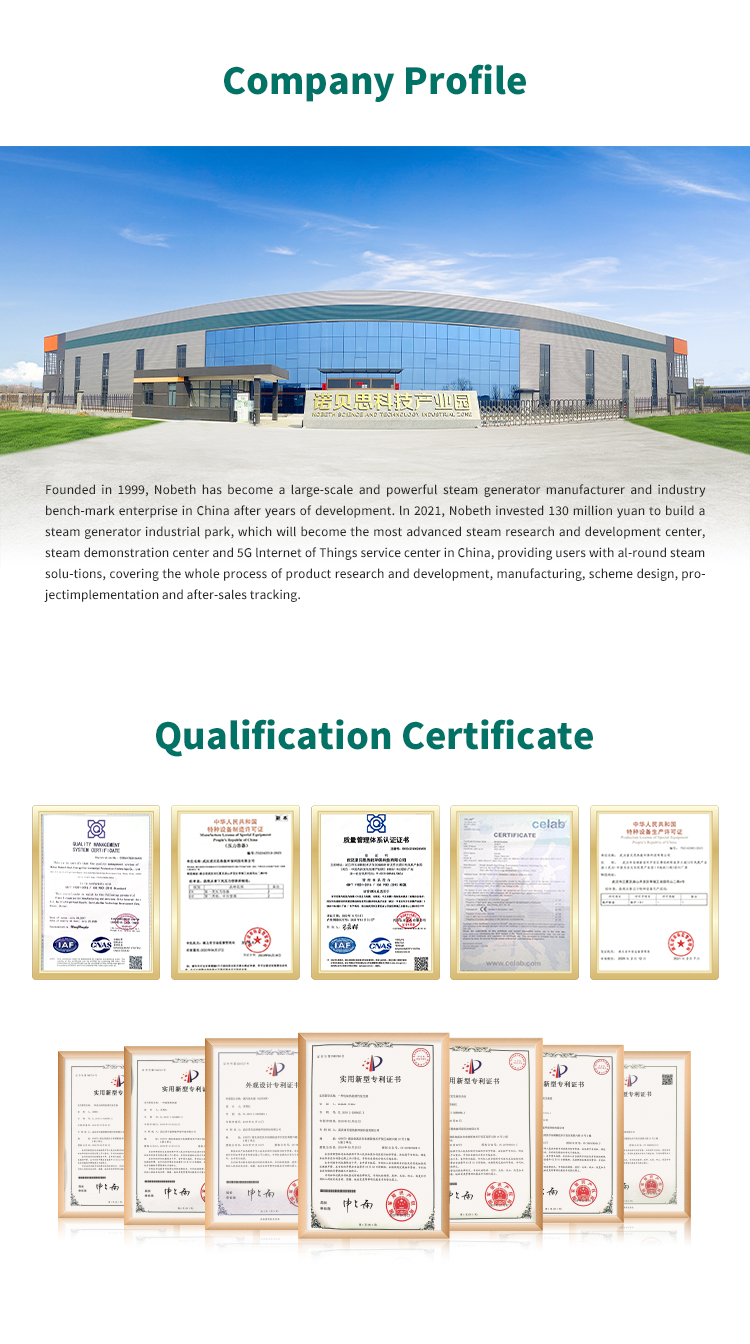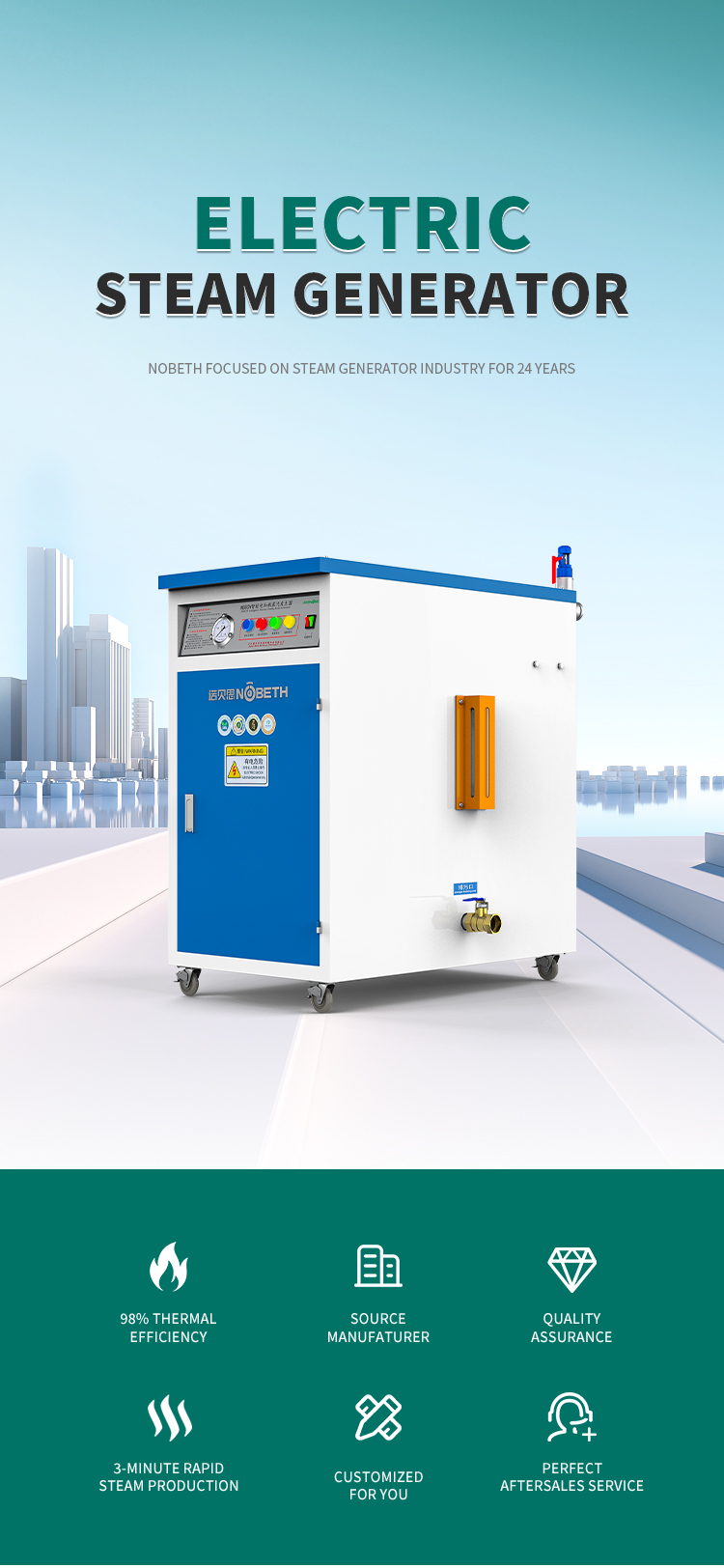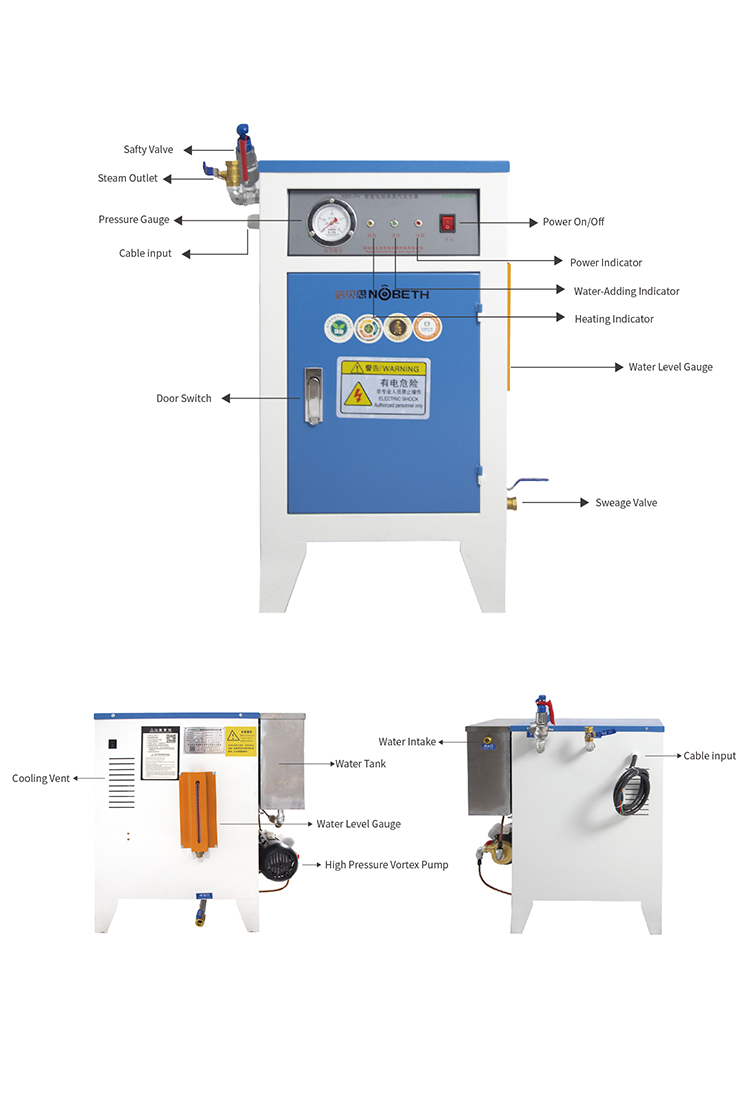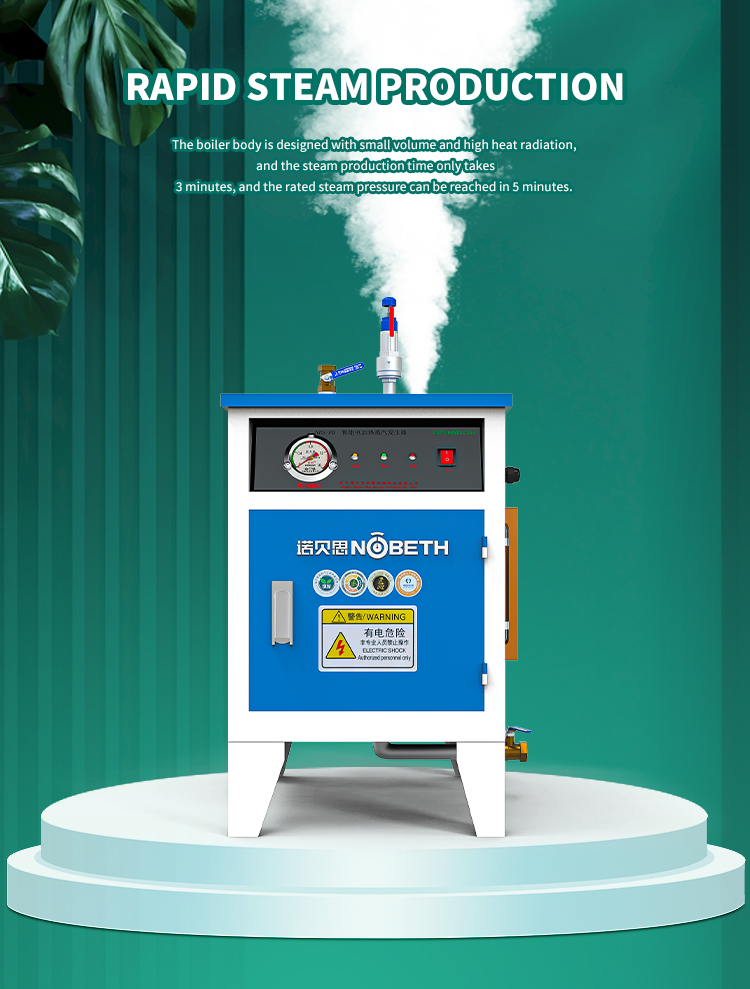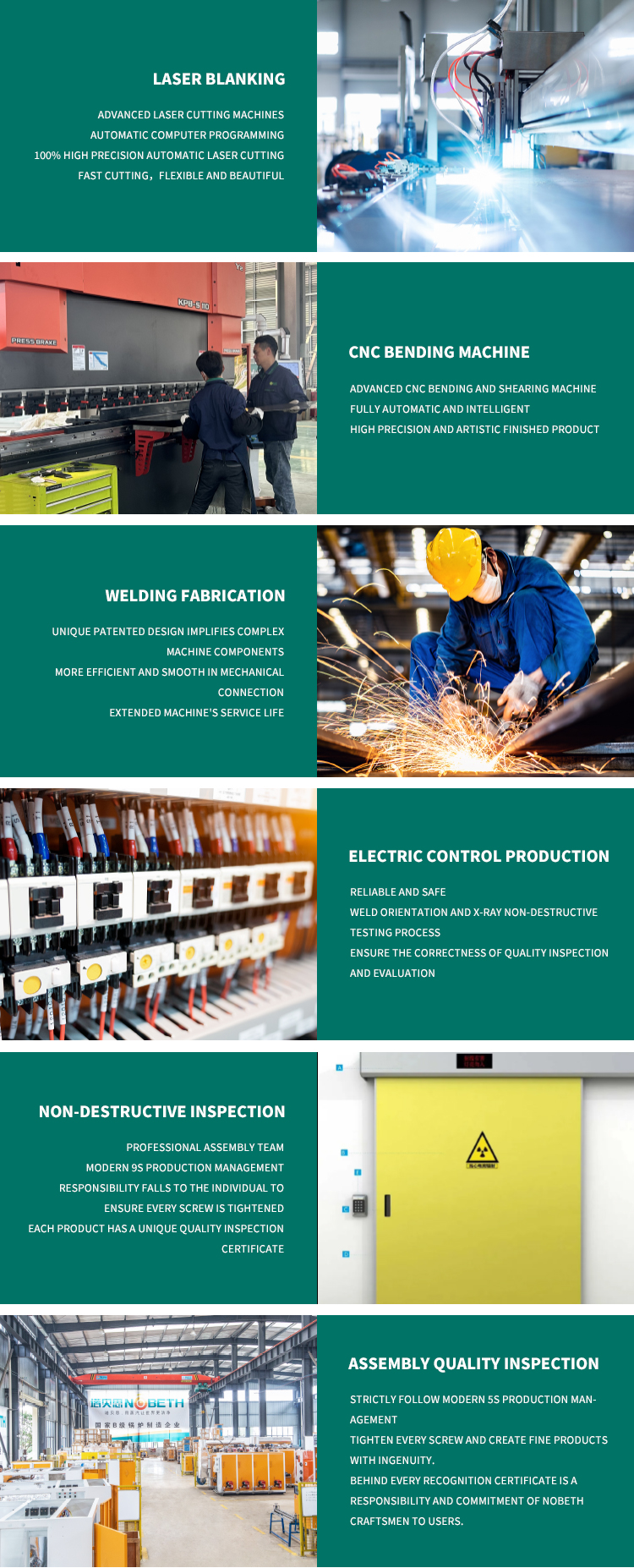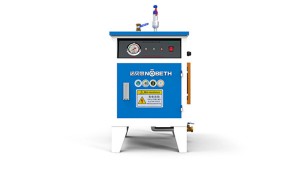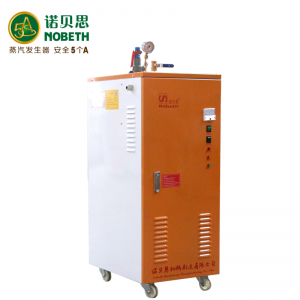
6kw Small Steam Generator for Irons
(1) How to cook the stove
1. Raise a slight fire in the furnace and slowly boil the water in the pot. The steam generated can be discharged through the air valve or raised safety valve.
2. Adjust the opening of the combustion and air valve (or safety valve). Keep the boiler at 25% working pressure (6-12h under the condition of 5%-10% evaporation). If the oven is cooked at the same time in the later stage of the oven, the cooking time can be appropriately reduced.
3. Reduce the firepower, reduce the pressure in the pot to 0.1MPa, drain the sewage regularly, and replenish water or add unfinished medicinal solution.
4. Increase the firepower, raise the pressure in the pot to 50% of the working pressure, and maintain 5%-10% evaporation for 6-20 hours.
5. Then reduce the firepower to reduce pressure, drain the sewage valves one by one, and replenish the water supply.
6. Raise the pressure in the pot to 75% of the working pressure and maintain 5%-10% evaporation for 6-20 hours.
During boiling, the boiler water level should be controlled at the highest level. When the water level drops, the water supply should be replenished in time. In order to ensure the effectiveness of the boiler, the pot water should be sampled from the upper and lower drums and the sewage discharge points of each header every 3-4 hours, and the alkalinity and phosphate content of the pot water should be analyzed. If the difference is too large, drainage can be used Make adjustments. If the alkalinity of the pot water is lower than 1mmol/L, additional medicine should be added to the pot.
(2) Standards for cooking stoves
When the content of trisodium phosphate tends to be stable, it means that the chemical reaction between the chemicals in the pot water and the rust, scale, etc. on the inner surface of the boiler has basically ended, and the boiling can be completed.
After boiling, extinguish the remaining fire in the furnace, drain the pot water after it has cooled, and scrub the inside of the boiler clean with clean water. It is necessary to prevent the high alkalinity solution remaining in the boiler from causing foam in the boiler water and affecting the quality of the steam after the boiler is put into operation. After scrubbing, the inner walls of the drum and header need to be inspected to completely remove impurities. In particular, the drain valve and water level gauge must be carefully checked to prevent sediment generated during boiling.
After passing the inspection, add water to the pot again and raise the fire to put the boiler into normal operation.
(3) Precautions when cooking the stove
1. It is not allowed to add solid drugs directly into the boiler. When preparing or adding drug solutions to the boiler, the operator should wear protective equipment.
2. For boilers with superheaters, alkaline water should be prevented from entering the superheater;
3. The fire-raising and pressure-raising work during boiling should follow the various regulations and operating sequences during the fire-raising and pressure-raising process when the boiler is running (such as flushing the water level gauge, tightening manholes and hand hole screws, etc.).
Products categories
-

E-mail
-

Phone
-

WhatsApp
-

Top


